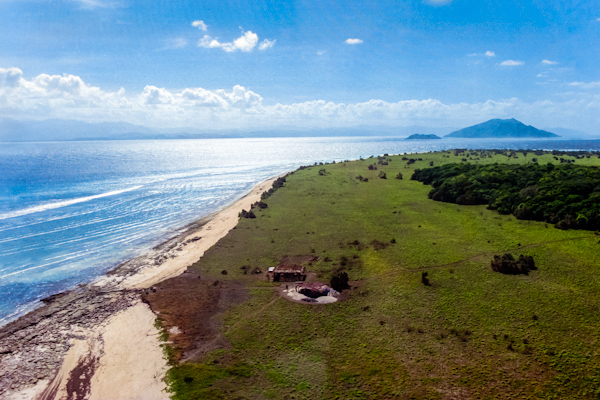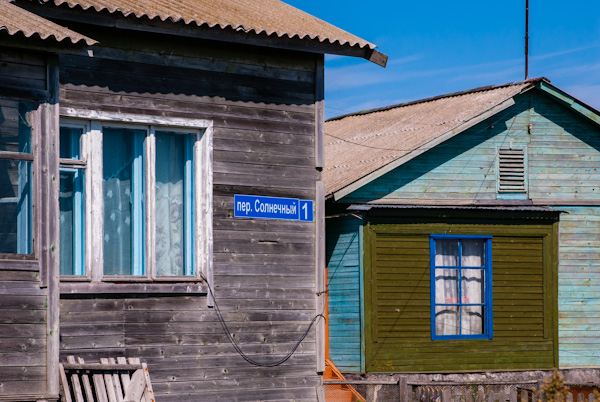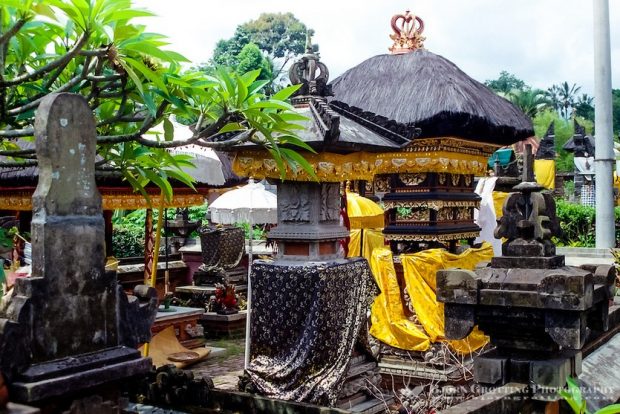Nineteenth-century Indonesia experienced not only the replacement of company rule by Dutch government rule but also the complete transformation of Java into a colonial society and the successful extension of colonial rule to Sumatra and the eastern archipelago. The modern state of Indonesia is in a real sense a nineteenth-century creation. It was during this century that most of its boundaries were defined and a process of generally exploitative political, military, and economic integration begun.
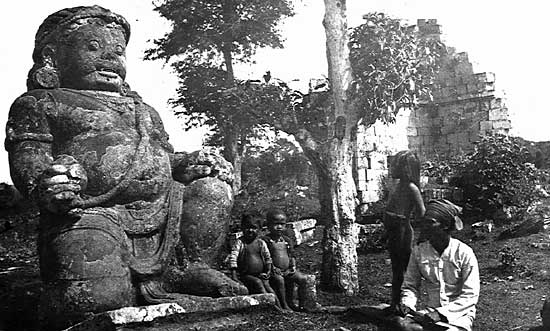
Some analysts, such as Benedict R.O’G. Anderson, argue that the New Order state of Suharto is a direct descendant of the Dutch colonial state, with similar objectives as summarized in the Dutch phrase rust en orde (tranquillity and order). There was, at least, a natural historical continuity between the Dutch colonial and modern Indonesian state.
The Java War and Cultivation System
During the VOC period, the Dutch depended on the compliance of the Javanese aristocratic class, which allowed them to rule in an indirect manner. The regents’ role of expropriating cash crops from the peasants to deliver to the VOC gave them a comfortable income, since they also continued to tax their subjects for rice and labor. Variations on this pattern were found throughout Java, with local adaptations. But the reforms of Daendels and Raffles threatened this arrangement. Moreover, the elite in Central Java were humiliated by a British occupation and partition of Yogyakarta in 1812. Many of the elite found themselves short of funds and indebted as Dutch demands for tax revenues expanded after 1816. The common people also suffered from years of war, disruption, and the exploitation of Chinese farmers employed by the British and the Dutch.

The Java War of 1825-30 constituted the last resistance of the Javanese aristocracy to Dutch rule. Its central figure was Pangeran Diponegoro (ca. 1785-1855), eldest son of the sultan of Yogyakarta. His education and disposition combined both Islamic and mystical elements: he was well acquainted with the teachings of the traditional Islamic schools (pesantren) in the rural village where he lived as a child with his grandmother, but he also experienced a vision in which the Goddess of the Southern Ocean promised that he was a future king. According to M.C. Ricklefs, Diponegoro was in a unique position to mobilize both the elite and the common people against the colonialists: “as a senior prince, he had access to the aristocracy, as a mystic to the religious community, and as a rural dweller to the masses in the countryside.”
The immediate cause of Diponegoro’s revolt in 1825 was the Dutch decision to build a road across a piece of his property that contained a sacred tomb. Thereupon ensued the Java War, a bitter guerrilla conflict in which as many as 200,000 Javanese died in fighting or from indirect causes (the population of Java at the end of the eighteenth century was only 3 million). Although the revolt was led by Diponegoro and other aristocrats, its considerable popular appeal, based on Islam and Javanese mysticism, created a scenario similar to twentieth-century wars in Southeast Asia. Insurgency was suppressed only after the Dutch adopted the “fortress system”: the posting of small units of mobile troops in forts scattered through the contested territory. Diponegoro was arrested in 1830 and exiled for a short time to Manado in northern Sulawesi and then to Makassar where he died. The territories of Yogyakarta and Surakarta were substantially reduced, although the sultans were paid compensation.
The Java War was not a modern anticolonial movement. Diponegoro and his followers probably did not want to restore an idealized, precolonial past. Nor did they envision an independent, modern nation. Rather they sought a Javanese heartland free of Dutch rule. Because of his anti-Dutch role, Diponegoro is one of modern Indonesia’s national heroes.
The Java War gave considerable impetus to a conservative trend in Dutch colonial policy. Rather than reforming their regime in the spirit of Daendels and Raffles, the Dutch continued the old VOC system of indirect rule. As it evolved during the nineteenth century, the Dutch regime consisted of a hierarchy in which the top levels were occupied by European civil servants and a native administration occupied the lower levels. The latter was drawn from the priyayi class, an aristocracy defined both by descent from ancient Javanese royal families and by the vocation of government service. The centerpiece of the system was the bupati, or regents. Java was divided into a number of residencies, each headed by a Dutch chief administrator; each of these was further subdivided into a number of regencies that were formally headed by a Javanese regent assisted by a Dutch official. The regency was subdivided into districts and subdistricts and included several hundred villages. The states of Surakarta and Yogyakarta remained outside this system. However, both they and the local regents lost any remnant of political independence they had enjoyed before the Java War. The sultanates played an important cultural role as preservers of Java’s traditional courtly arts, but had little or no impact on politics.
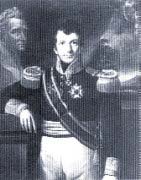
Starting in 1830, a set of policies known as the Cultivation System (cultuurstelsel in Dutch) was implemented as a means of covering the high cost of colonial administration in Java and bolstering the Netherlands’ weak financial condition following the Napoleonic Wars and a civil war with Belgium, with which the Dutch had united in 1815. Governor General Johannes van den Bosch (served 1830-34), the system’s proposer, argued that the Cultivation System would benefit both colonizer and colonized. In fact, it brought the Netherlands handsome profits, increased the conspicuous consumption of the indigenous elite, enriched European officials and Chinese middlemen, but was a terrible burden for Javanese villagers. The Cultivation System in theory required that participating villages grow export crops to raise funds sufficient to meet their land-tax commitment, which was based on rice production. Export crops–the most profitable being coffee, sugar, indigo, tea, cinnamon, pepper, tobacco, cotton, silk, and cochineal–were sold to the government at fixed prices. A balance was supposed to be established between rice production and export crops and both the village and the colonial economy–and the Netherlands–would enjoy the benefits.
In practice, however, as some historians have pointed out, there was not a “system.” Wide local and regional variations in applying van den Bosch’s theory occurred and, instead, colonial exploitation took place. The growth of export crops became compulsory. The crops themselves were shipped to the Netherlands by the Netherlands Trading Company (NHM), which held a monopoly over Cultivation System trade until 1872, and Amsterdam regained its seventeenth-century status as the primary European market for tropical products. Profits from the system constituted between 19 and 32 percent of the Netherlands’ state revenues between the 1830s and 1860. These profits erased the colonial government’s deficits, retired old VOC debts, financed the building of the Netherlands state railroad, funded the compensation of slaveholders after the abolition of slavery in the colony of Suriname, and paid for Dutch expansion into Sumatra and the eastern archipelago. The success attributed to the Cultivation System inspired a Briton, aptly named James William Bayley Money, to publish a book entitled Java, or, How to Manage a Colony in 1861.
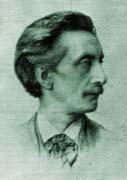
A year earlier, however, a former Dutch colonial official, Eduard Douwes Dekker, using the pen name Multatuli, wrote another book, Max Havelaar: or The Coffee Auctions of the Dutch Trading Company, that exposed the oppression of Javanese peasants by corrupt and greedy officials, both Dutch and Javanese. Max Havelaar eventually had an impact on liberal opinion in the Netherlands and, through translations, in other countries similar to that of Harriet Beecher Stowe’s Uncle Tom’s Cabin in the United States. Some twentieth-century historians, such as Bernard Hubertus Maria Vlekke, claimed that the Cultivation System benefited rural Javanese, pointing to the rapid increase of the population from 7 to 16.2 million between 1830 and 1870. But most evidence supports Douwes Dekker’s images of harsh exploitation. Even if the compulsory growing of export crops–particularly coffee, which remained the most profitable–did not divert much land from the cultivation of rice, the labor requirements were so great that farmers had little time or energy to devote to staple crops. Moreover, as the prices paid by the government for export crops increased, the Dutch used this as justification to raise the land tax assessment. More effort and organization had to be applied to export-crop production to offset the land-tax increases. By the 1840s, rice shortages appeared and famines and epidemics occurred, resulting in dislocation of some segments of the rural population seeking more profitable land. Nevertheless, profits increased but so too had the cost of maintaining the colonial military establishment, and that, in turn, applied pressure for more export- crop development. The colonial government did little to curb corruption and abuses, which made what was in fact a highly organized system of forced labor even more unendurable.
During the early 1860s, a liberal Dutch government began dismantling the Cultivation System, abolishing government monopolies over spices, indigo, tea, tobacco, and cochineal (the spice monopoly had been in effect since the early seventeenth century). In 1870 the Sugar Law provided for government withdrawal from sugar cultivation over twelve years, beginning in 1878. The Agrarian Law, also passed in 1870, enabled foreigners to lease land from the government for as long as seventy-five years, opening Java up to foreign private enterprise. These developments marked the gradual replacement of the Cultivation System and the beginning of an era of relatively free trade, although compulsory cultivation of coffee continued until 1917.
Dutch Expansion in Sumatra and the Eastern Archipelago

Both the British occupation of the archipelago during the Napoleonic Wars and the Java War seriously weakened Dutch authority outside of Java. Pirates flourished in the power vacuum, making Indonesian waters among the most dangerous in the world. In the 1840s, the British established a presence in northern Kalimantan (North Borneo), where James Brooke made himself the first “White Rajah” of Sarawak. Alarmed by such developments, the Dutch initiated policies of colonial expansion in the Outer Islands*, which brought all the land area of modern Indonesia, with the exception of Portuguese Timor, under their control. Dutch expansion began first in neighboring Sumatra. By 1823 the eastern part of the island, including Palembang, was under Dutch control. The Padri War (1821-38) pacified the Minangkabau region. The padri were religious teachers committed to the reform and propagation of Islam and were dominant in the region after the assassination of the Minangkabau royal family in 1815. Conflicts arose between them and secular adat leaders, and the latter called for Dutch intervention. Between the 1870s and the end of the century, colonial troops also defeated the fierce Batak ethnic group, living north of the Minangkabau, and the colonial government encouraged the populace to convert to Christianity.
The 1824 Treaty of London defined a British sphere of influence on the Malay Peninsula and a Dutch sphere on Sumatra, although its provisions placed no restrictions on British trade on the island. Sumatran trade became an issue of contention, however, because the British resented what they saw as Dutch attempts to curtail their commercial activities. One provision of the Treaty of London was the independence of the north Sumatran state of Aceh. But Aceh controlled a large portion of the pepper trade and alarmed the Dutch by actively seeking relations with other Western countries. A new Anglo-Dutch treaty, signed in 1871, gave the Dutch a free hand in Sumatra concerning Aceh. Two years later, talks between the United States consul in Singapore and Acehnese representatives gave Batavia the pretext for opening hostilities. Dutch gunboats bombarded the sultanate’s capital, Banda Aceh, and troops were landed. The capital fell under Dutch occupation the following year, but Acehnese forces undertook guerrilla resistance. The Aceh War (1873-1903) was one of the longest and bloodiest in DutchIndonesian history.
During the nineteenth century, militant or reformist Islam posed a major challenge to Dutch rule, especially in Sumatra. The padri of Minangkabau, for example, were returned pilgrims from Mecca who were inspired by Wahhabism–a Western term given to the strict form of Islam practiced in Arabia–that stressed the unitary nature of God. The padri were determined to purge their society of non-Islamic elements, such as the traditional system of matrilineal inheritance and consumption of alcohol and opium. The Acehnese, the most rigorously fundamentalist of Indonesian Muslims, also had close contacts with Mecca.
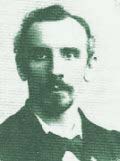
The principal architect of colonial Islamic policy was Christiaan Snouck Hurgronje, a scholar of Arabic who had gone to Mecca to study Indonesian pilgrims and served as adviser to the Netherlands Indies government from 1891 to 1904. His policy was one of cooptation rather than opposition: instead of promoting the spread of Christianity, he suggested, the government should maintain supportive relations with established Islamic authorities such as the qadi or judges of the royal courts. “Established” Islam was no threat, according to Snouck Hurgronje, but “fanatic” Muslim teachers who maintained independent Islamic schools were. He also advised that the government coopt local nonIslamic chiefs, whose source of authority was based on adat or local law and custom. This practice was, in fact, Dutch policy in Aceh after the war. Local Acehnese chiefs, the uleebalang, were given much the same role as the priyayi on Java.
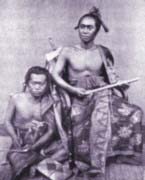
Farther east, the Dutch imposed rust en orde, the colonial system, on Madura, where local rulers were assimilated into the regency system in 1887; on Kalimantan, where in 1860 the sultanate of Banjarmasin had been dethroned and replaced by direct colonial rule; in Sulawesi, where wars between the Dutch and the Makassarese and Buginese states of Gowa and Bone continued until 1905-06 and where the headhunting Toraja people were also subjugated; and in the remote western half of New Guinea, which was brought under full control only after World War I. The Dutch had first built a fort at Lobo in West New Guinea in 1828, but abandoned it eight years later.
The Balinese stubbornly resisted Dutch attempts to subjugate them throughout the nineteenth century. This mountainous, volcanic island of great natural beauty, with its own Hindu-animist culture, art, and ways of life, was divided into a number of small kingdoms whose rulers saw no more reason to submit to Batavia than they had to Islamic states during the previous four centuries. Although the northern part of the island came under Dutch control by 1882 and was joined with the neighboring island of Lombok as a single residency, the southern and eastern rulers refused to accept full Dutch sovereignty
. Between 1904 and 1908, military expeditions were sent to suppress them. Some of the kings and their royal families, including women and children, realizing that the independence and self-sufficiency of their ancient world were crumbling, committed suicide by marching in front of Dutch gunners during the height of battle.
Colonial Economy and Society, 1870-1940
The dismantling of the Cultivation System on Java, Dutch subjugation of Sumatra and the eastern archipelago, and the opening of the Suez Canal in 1869 stimulated the rapid development of a cash-crop, export economy. Another factor was technological change, especially the rise of the automotive industry, which created unforeseen markets for tropical products in Europe and North America. Although palm oil, sugar, cinchona (the source of quinine, used in treating malaria), cocoa, tea, coffee, and tobacco were major revenue earners, they were eclipsed during the early twentieth century by rubber and, especially, petroleum. Sumatra and the eastern archipelago surpassed Java as a source of tropical exports, although sugarcane remained important in East Java.
Rubber plantations were established on a large scale in the early twentieth century, particularly around Medan, Palembang, and Jambi on Sumatra, with British, American, French, and other foreign investment playing a major role. A high-yield variety of rubber tree, discovered in Brazil and proven very profitable in Malaya, was utilized. It was during this period that the emergence of small-holder rubber cultivation, which was to play a major role in the Indonesian economy, took place.
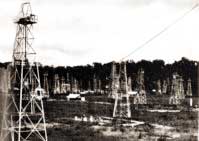
Tin had long been a major mineral product of the archipelago, especially on the islands of Bangka and Billiton, off the southeast coast of Sumatra. But petroleum was, and remained, Indonesia’s most important mineral resource. Oil, extracted from Sumatra after 1884, was first used to light lamps. In 1890, the Royal Dutch Company for Exploration of Petroleum Sources in the Netherlands Indies (Koninklijke Nederlandsche Maatschappij tot Exploitatie van Petroleum-bronnen in Nederlandsche-Indië) was established, and in 1907 it merged with Shell Transport and Trading Company, a British concern, to become Royal Dutch Shell, which controlled around 85 percent of oil production in the islands before World War II. Oil was pumped from wells in Sumatra, Java, and eastern Kalimantan.
Rapid economic development during the late nineteenth and early twentieth centuries profoundly changed the lives of both European residents and indigenous peoples. By 1930 Batavia had a population of more than 500,000 people. Surabaya had nearly 300,000 people and other large cities–Semarang, Bandung, Yogyakarta, and Surakarta– had populations between 100,000 and 300,000.
Always conscious of its ethnic and cultural diversity, Indonesian society grew more so as the number of Dutch and other Western residents–especially white women–increased and chose to live European-style lives in special urban areas with wide streets or on plantations. There also were increasing numbers of Indonesians who lived in these Western-style urban areas. Nevertheless, the European trekkers, as they were known in Dutch, were often not much different from their British counterparts described by George Orwell in Burmese Days, longing for the home country and looking on the native world around them with suspicion and hostility. An early twentieth century work described Batavia’s European quarter as “well planned, it is kept scrupulously clean, and while the natives in their bright colored clothes, quietly making their way hither and thither, give the required picturesque touch to the life in the streets, the absence of the crowded native dwelling houses prevents the occurrence of those objectionable features which so often destroy the charm of the towns in the Orient.”
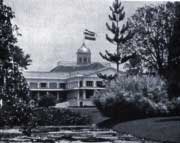
35Management algorithm of ED in the patient with viagra vs cialis direct therapies for ED to address psychological reactions to.
. This was used by the Netherlands Indies government from 1870 until 1942. (Years later, Sukarno used it as a Presidential retreat” width=”180″ height=”143″ /> The Governor’s Palace at Buitenzorg (now Bogor), flying a Dutch flag. This was used by the Netherlands Indies government from 1870 until 1942. (Years later, Sukarno used it as a Presidential retreat
The trekkers contrasted with an earlier generation of Dutch colonists, the blijvers (sojourners), who lived most or all of their lives in the islands and adopted a special Indisch (Indies) style of life blending Indonesian and European elements. The rijsttafel (rice table), a meal of rice with spicy side dishes, is one of the best-known aspects of this mixed IndonesianEuropean culture. Eurasians, usually the children of European fathers and Indonesian mothers, were legally classified as European under Netherlands Indies law and played an important role in colonial society; but as trekkers outnumbered blijvers, the Eurasians found themselves increasingly discriminated against and marginalized. It is significant that a strand of Indonesian nationalism first emerged among Eurasians who argued that “the Indies [were] for those who make their home there.”
The Chinese minority in Indonesia had long played a major economic role in the archipelago as merchants, artisans, and indispensable middlemen in the collection of crops and taxes from native populations. They encountered considerable hostility from both Indonesians and Europeans, largely because of the economic threat they seemed to pose. In 1740, for example, as many as 10,000 Chinese were massacred in Batavia, apparently with the complicity of the Dutch governor general. In the late nineteenth century, emigration from China’s southern provinces to Indonesia increased apace with economic development. Between 1870 and 1930, the Chinese population expanded from around 250,000 to 1,250,000, the latter being about 2 percent of the archipelago’s total population. Chinese were divided into totok, first-generation, fullblooded emigrants, and peranakan, native-born Chinese with some Indonesian ancestry who, like blijvers and Eurasians, had a distinct Indies life-style. Overseas Chinese lived for the most part in segregated communities. During the early twentieth century, the identity of overseas Chinese was deeply influenced by revolutionary developments in their homeland.
*Outer Islands
Term used by some sources to refer to all islands of the Indonesian archipelago other than Java and Madura. Other sources, however, use the term to refer to all islands except Java, Madura, Bali, and Sumatra; still others say except Java and Bali or exclude Java, Madura, and Bali. The term as translated from Dutch–buitengewesten–means outer terroritories or regions while a similar term from Bahasa Indonesia (q.v.)–tanah seberang–means land (or lands) over there, or across the seas. The term is sometimes considered pejorative by those people living on the islands indicated.
Data as of November 1992

